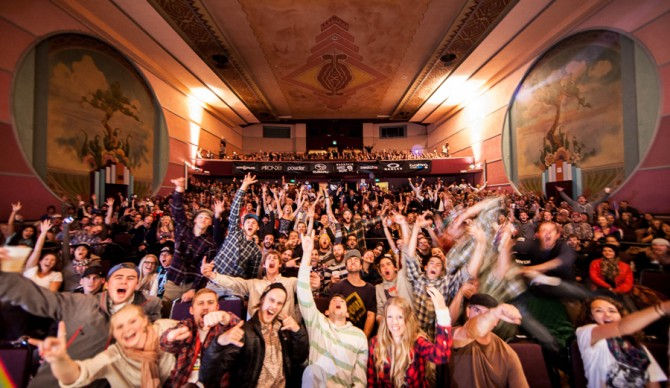The Business of Movie Theaters
- Adam Carr

- Feb 24, 2022
- 5 min read
The announcement by Warner Bros. studios to release its entire slate of 2021 films straight to streaming has sent shock waves through the industry. The relationship between studios and theater owners was precarious at best but this just turns the knife.

Streaming has become very romantic for the major studios especially during the age of COVID. Even before the pandemic many customers went to streaming for their entertainment. Netflix pretty much led the way by inventing the process. Disney followed suit and created Disney Plus to add to its collection of channels and Warner Bros. started HBO MAX. It seems that streaming has become the NFL of distribution for the major studios while theaters have morphed in Major League Soccer. But just like the MLS there is still a lot of potential value in the venue.
Technology has always disrupted the film business. The younger makers usually take these new inventions and run with it while the established and more traditionalists shy away from innovations claiming that films shouldn't be messed with; they are made to be seen in theaters and not on a small box or a smaller phone. This uncompromising stance has already lost since it's the consumer who decides where to watch their movies.
But studios can learn something from the history of motion pictures. The mentality, like a school of fish who've spotted something shiny, has been to converge at the newest revenue stream that appears. Today's philosophy is that their financial fortunes lie in consumers' living rooms. Distracted by the plotting to dominate the streaming landscape they've forgotten the fertile land they've just abandoned.
Everyone loves going to the movies. Children- whom Disney has made a living off- to teenagers- the horror films have never lost their selling potential- to young adults- war , spy and romantic comedies- and older adults- historical epics and romances. As the studios have come under the control of corporations, however, their production has centered on comic book series since the "studies" indicate that's where the most financial gain with the less risk lays. They've abandoned every other demographic. And these demographics go to the movies.
The trouble with the studios being run by corporations is the mistrust of an individual filmmaker to bring home a financial winner. They give slack to the legends working today, Steven Spielberg (although Spielberg even had trouble financing his historical drama "Lincoln"), but they'd rather put their trust in a formulaic business plan then in storytellers telling a story. This is the reason for abandoning those other demographics. But it would be a mistake. Older adults go to see movies. In the 80's, just when the action adventure, horror and sci-fi movies were picking up steam dramas, romantic comedies and comedies could still command a share of the pie. In 1981 On Golden Pond, Arthur, Stripes, Chariots of Fire and the Four Seasons shared the top ten of highest grossing films. In 82 Tootsie, An Officer and a Gentleman, Best Little Whorehouse in Texas and Annie. In 84 Karate Kid, Footloose, Terms of Endearment and Romancing the Stone where in the top ten. In '85 Out of Africa, Witness and The Color Purple.
These films, because of lack of special effects and exotic locations, could be made cheaper then their tent pole counterparts. But I have a feeling that the sexiness of spending hundreds of millions of dollars is a badge CEO's like to wear. This spending has lodged itself into the movie studio CEO's mind set which has blocked the ability of finding another means of distributing their films.
Film history can point us in the direction of being profitable in the movie theaters. The modern model of film distribution that is etched in the minds of corporations is to mass distribute, relying on the returns of the opening weekend to propel the film further through the calendar. The origin of releasing films this way started with Spielberg's "Jaws." It was the first movie to drop into thousands of theaters at once and the revenue explosion was the scent needed for corporate CEO's to change film distribution. "Star Wars" was released the same way and that was enough evidence for the studios to release every film that way. Of course every film cannot be expected to generated tons of cash in only two weeks after its release.
If we look pre "Jaws" we discover that studios nurtured their films during distribution. They would open a film in one state in a couple of theaters. They would focus on the advertisement in that area and try to build word of mouth. The success of that run would bring about the resources to move on to another venue. This campaign would snowball so that there would be no need to spend tons of cash in locations the studio didn't have time to market.

This is the model that should be emulated. Building anticipation will help generate buzz for a new release. And how to do that? Start by building an account on social media for each release. Give a couple of snippets as to what the film is about and to what genre it belongs. Show how the film is being made, a look behind the scenes. Show interviews with actors and crew.
Then add a contest to get these interested followers involved. The point of the contest would be to find what town, in the heart of America, would host the premiere. It could be to play out a scene from their favorite movie or to have a vote on which town would be the best to hold the premiere. The point would be to build interest. This would replace the great cost of advertising.
The premiere would be held in that town that won whatever contest was devised. The studio could then stream the premiere. It would give the film and company more buzz worthy hype. Anyone could join, online, for $5 (?) a pop. Not to see the movie but to join the crowd as they arrive at the theater and to be a part of the Q & A after. Along with the premiere the production should be accompanied with a novel adapted from the movie and a playbill. The playbill would be made up of behind the scenes pictures with interviews and stories on the making of the film. The movie poster should be included. These books and magazines should accompany the film in its release to all the theaters. They could be sold at the concession stands and not only be another form of revenue but also expand the studios' business markets.

The important part of this distribution plan is to build word of mouth. It does this through social media for a fraction of the cost of traditional advertisement. It will raise the money needed to play in the big cities which will be the icing on the cake by the time you get there.
This would also be good news to theater owners who are desperate for product. The streaming services have threatened their existence. The deals theater owners would cut with the studios usually was a fifty- fifty split on the gross. Today, with the exodus to streaming, a film company could make a more reasonable deal while obtaining permission to sell the books and playbills during the movie run. Films are like wine. They need time to mature. Even with social media word of mouth needs time to spread. Good films make as much money in the fourth week as they did in the first. That's from the wave created by word of mouth.
There is money to be made in releasing films in the theaters. People still want that social experience while being taking away in their imaginations with a good story. The answer lies in combining the technologies of today with the history of the past. There's too much money on the table not to.



Comments